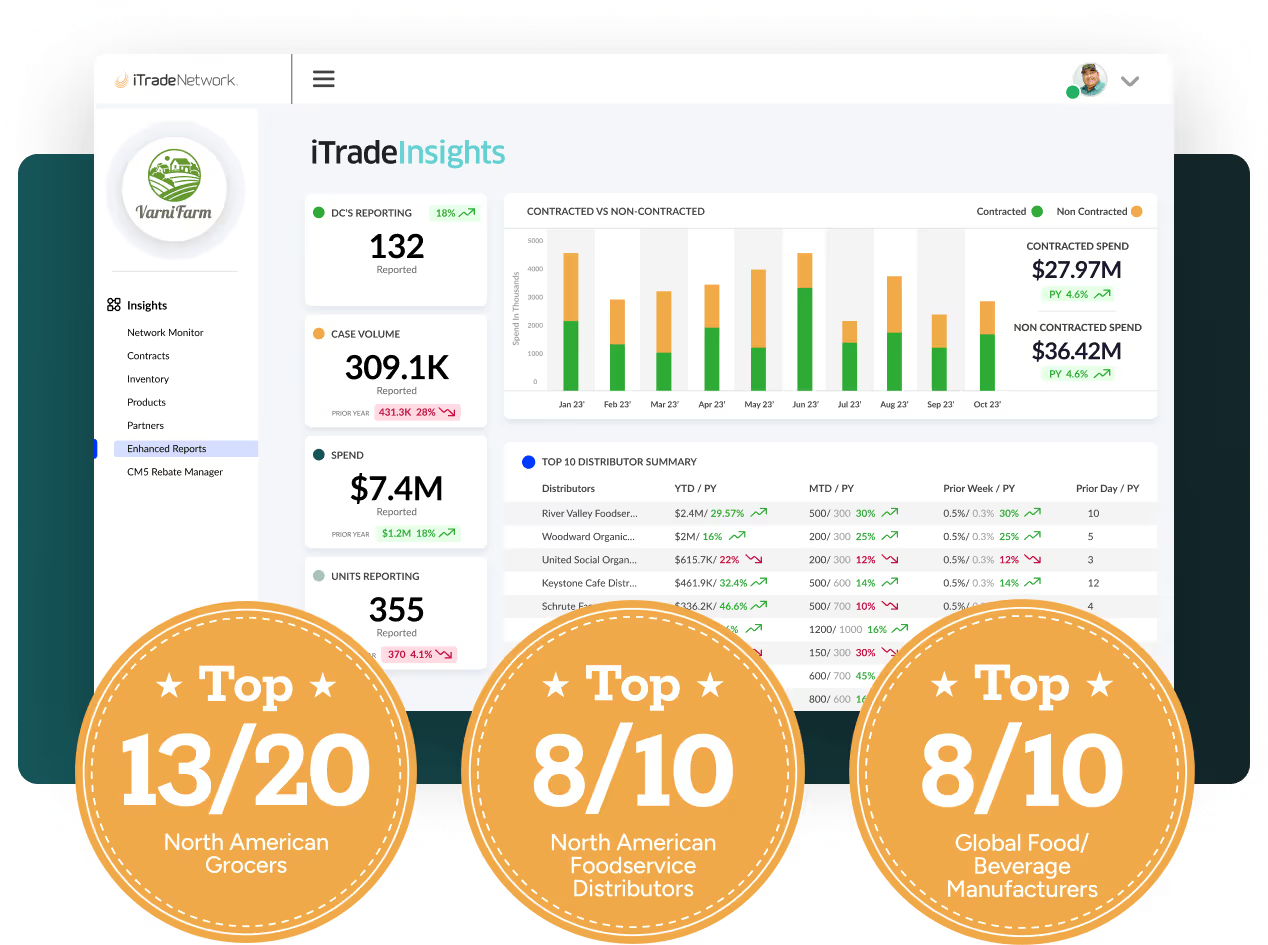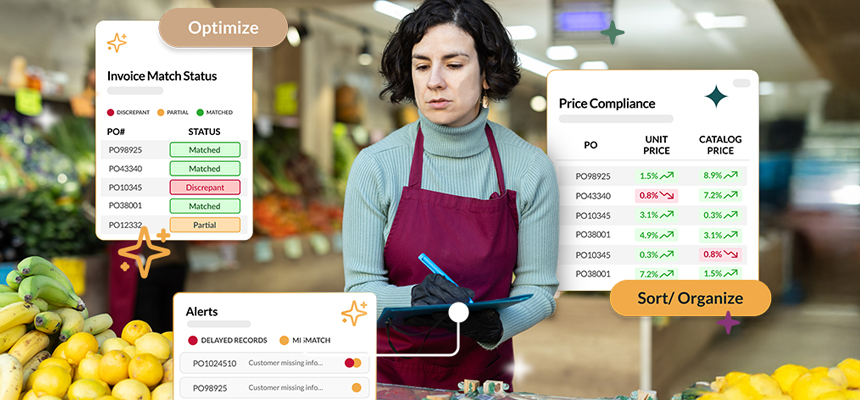Adapting to Changing Customer Preferences as a Growing Grocer

Never have customer preferences changed so fast as they did in 2020. As the Boston Consulting Group shared, shifts in the food industry that usually take years happened in a matter of months. As a growing grocer not only do you have to be able to adapt to those changes in behavior as they happen, but also you have to figure out a way to plan for sudden disruptions in the future.
New Customer Preferences
According to a McKinsey & Company report, changes in shopping and consumption over the past year include:
- A surge in online shopping
- Preference for trusted brands
- Reduced spending on non-essential items
- Larger basket use due to reduced shopping frequency
- Shopping at stores closer to home
- Trading down
As less is spent on prepared foods at restaurants, customers are cooking from home leading to increased spending at grocery stores in their neighborhood. And this preference may not be temporary. Recent surveys showed 60% of consumers said that they will continue to reduce spending at restaurants and continue to eat at home even after all COVID-19 restrictions are lifted.
In order to seize the opportunity of this new trend, grocers like you need to be able to adapt fast so you can remain stocked with the quality products your customers want and need.
3 Ways to Adapt
Being able to prepare for changing consumer preferences is easy to say, but harder to do if you don’t have the right procurement processes in place. Here are three things you need to do to adapt successfully.
1. Expand Your Supplier Network
In order to adapt to changing customer preferences and demands, you need a bigger variety of suppliers to choose from. This ensures you can give customers the products they need when they need them.
iTradeNetwork makes expanding your suppliers easy through its marketplace of more than 8,000 trading partners. While I’m sure you have strong relationships in place with your current vendors, to grow, it’s important to have options in case they don’t have what you need.
Not only is it important to get the right products, but you also want to find what your customers need at the best price. iTrade allows you to compare suppliers based on like items and get real-time freight quotes.
2. Increase Supplier Collaboration
As you increase the number of suppliers in your network, it’s important to make sure you still maintain and manage the relationships. This has to go beyond transactional communication; it needs to be collaborative.
A lack of trust and communication is the biggest roadblock to supply chain workflow efficiency. That poor communication stems from manual processes that create unnecessary back-and-forths as well as lost orders, and wrong orders. This creates those bottlenecks that keep impacting the accuracy and timeliness of your orders.
If you don’t have what your customers need, they will go somewhere else. So you must increase collaboration with your suppliers using modern solutions that allow for real-time communication and transparency for both sides.
3. Implement an Order Management System
To manage your expanded supplier network efficiently, you need to invest in the right technology, like an order management solution that can centralize and automate the procurement process. A solution like iTradeNetwork’s OMS allows you to have open, real-time communication with suppliers, track orders every step of the way, and easily address change orders to ensure you get the right shipment in the right timeframe. This is especially important when it comes to tracking fresh produce orders.
By collaborating through a centralized system, you can see trends in the market and make accommodations for incoming shipments. OMS makes sure you’re always ahead of the curve so you can provide customers with the best products available when they need them.
To see how iTradeNetwork’s OMS can work for you and help you adapt quicker and easier than other solutions, schedule a demo today.
Speak to an Expert
Take a closer look at the platform built for buyers and their trading partners

Adapting to Changing Customer Preferences as a Growing Grocer
Never have customer preferences changed so fast as they did in 2020. As the Boston Consulting Group shared, shifts in the food industry that usually take years happened in a matter of months. As a growing grocer not only do you have to be able to adapt to those changes in behavior as they happen, but also you have to figure out a way to plan for sudden disruptions in the future.
New Customer Preferences
According to a McKinsey & Company report, changes in shopping and consumption over the past year include:
- A surge in online shopping
- Preference for trusted brands
- Reduced spending on non-essential items
- Larger basket use due to reduced shopping frequency
- Shopping at stores closer to home
- Trading down
As less is spent on prepared foods at restaurants, customers are cooking from home leading to increased spending at grocery stores in their neighborhood. And this preference may not be temporary. Recent surveys showed 60% of consumers said that they will continue to reduce spending at restaurants and continue to eat at home even after all COVID-19 restrictions are lifted.
In order to seize the opportunity of this new trend, grocers like you need to be able to adapt fast so you can remain stocked with the quality products your customers want and need.
3 Ways to Adapt
Being able to prepare for changing consumer preferences is easy to say, but harder to do if you don’t have the right procurement processes in place. Here are three things you need to do to adapt successfully.
1. Expand Your Supplier Network
In order to adapt to changing customer preferences and demands, you need a bigger variety of suppliers to choose from. This ensures you can give customers the products they need when they need them.
iTradeNetwork makes expanding your suppliers easy through its marketplace of more than 8,000 trading partners. While I’m sure you have strong relationships in place with your current vendors, to grow, it’s important to have options in case they don’t have what you need.
Not only is it important to get the right products, but you also want to find what your customers need at the best price. iTrade allows you to compare suppliers based on like items and get real-time freight quotes.
2. Increase Supplier Collaboration
As you increase the number of suppliers in your network, it’s important to make sure you still maintain and manage the relationships. This has to go beyond transactional communication; it needs to be collaborative.
A lack of trust and communication is the biggest roadblock to supply chain workflow efficiency. That poor communication stems from manual processes that create unnecessary back-and-forths as well as lost orders, and wrong orders. This creates those bottlenecks that keep impacting the accuracy and timeliness of your orders.
If you don’t have what your customers need, they will go somewhere else. So you must increase collaboration with your suppliers using modern solutions that allow for real-time communication and transparency for both sides.
3. Implement an Order Management System
To manage your expanded supplier network efficiently, you need to invest in the right technology, like an order management solution that can centralize and automate the procurement process. A solution like iTradeNetwork’s OMS allows you to have open, real-time communication with suppliers, track orders every step of the way, and easily address change orders to ensure you get the right shipment in the right timeframe. This is especially important when it comes to tracking fresh produce orders.
By collaborating through a centralized system, you can see trends in the market and make accommodations for incoming shipments. OMS makes sure you’re always ahead of the curve so you can provide customers with the best products available when they need them.
To see how iTradeNetwork’s OMS can work for you and help you adapt quicker and easier than other solutions, schedule a demo today.
Unlock It Now!




